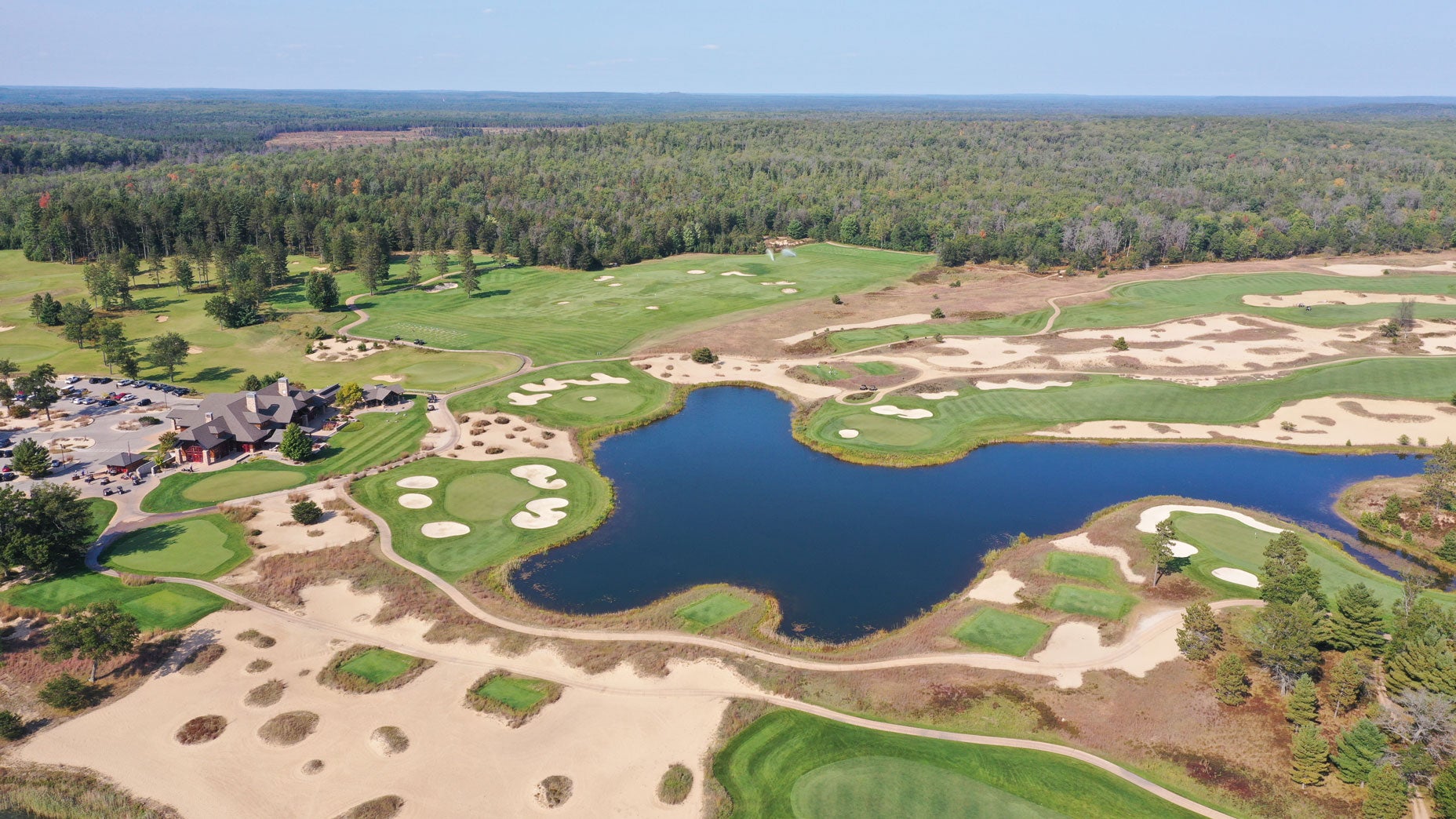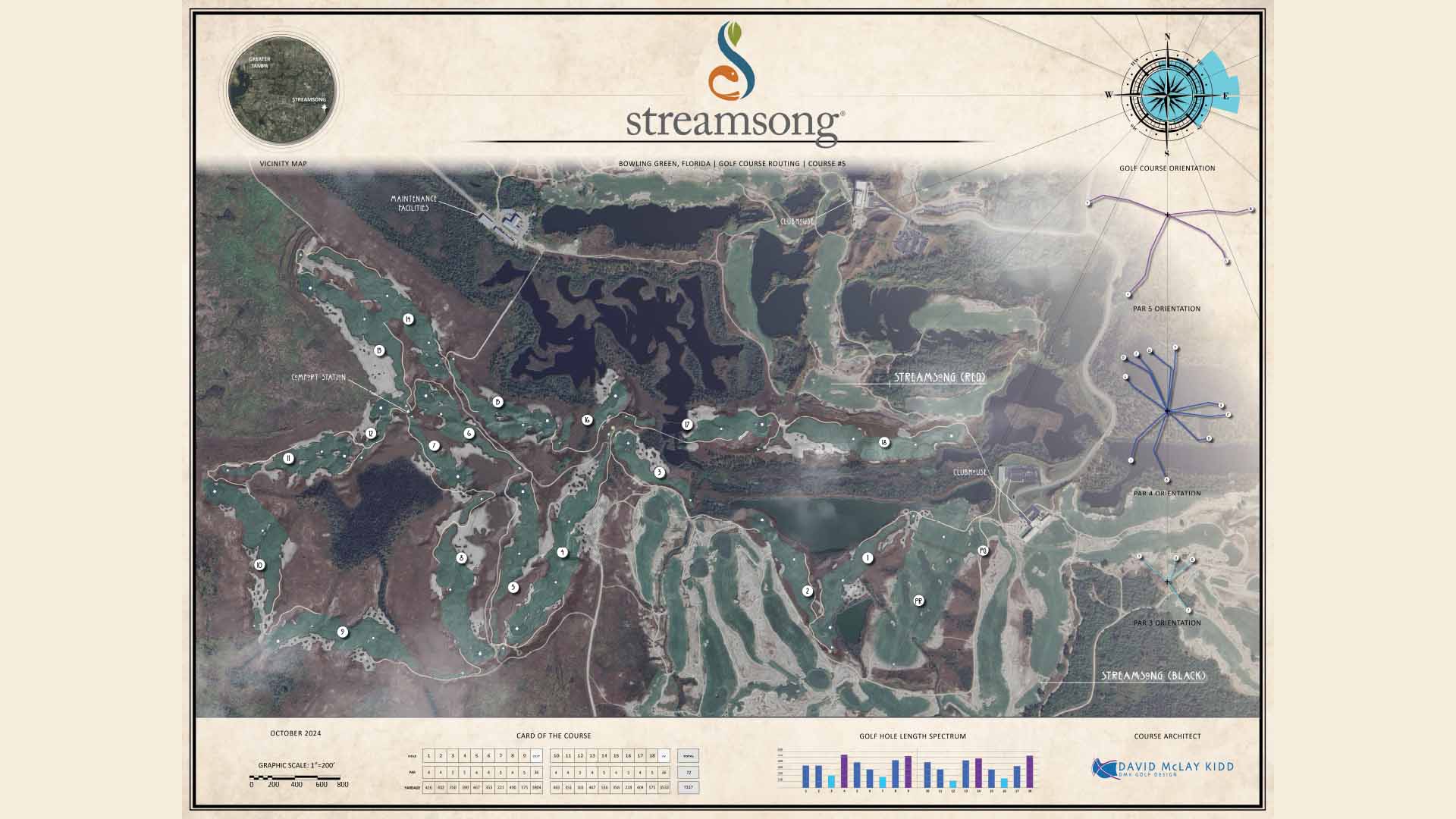Once upon a (tee) time, in a faraway land — actually, it was 24 years ago in Clio, Calif., in the mountains north of Tahoe — a fearsome course was born. It was called the Dragon, and its owners liked to tout it as a terrifying place.
The logo for the course was exactly that — a dragon — and its slogan, used in ads and on golf-shop souvenirs, doubled as a taunt. “Send me your heroes.”
Things were different in the game back then. “Fun” was not the buzzword that it is today. Golf was widely seen as a form of mortal combat. If you lost a dozen balls in the battle, so be it. When people called Pete Dye the Marquis de Sod, they did so with a hint of admiration.
Dye did not design the Dragon. Robin Nelson did. His routing, which moved through ample shifts in elevation, brought all kinds of peril into play, with tilted fairways pinched by lateral hazards and forced carries over ravines.
In its early goings, the Dragon’s reputation was a powerful draw. Many a brave golfer set out to slay the course, only to get torched by the fire-breathing layout. And then, as often happens in tales involving knights and foreboding beasts, the plot shifted. Golfers grew less interested in getting abused. Enough of them ceased seeking out the Dragon that the course shut down, then reopened under different owners, who seemed to recognize that sadism wasn’t a great selling point. In the years since, major efforts have been made to soften the course and its image. Though the layout still has fangs, it’s now nowhere near as fierce. Neither is the marketing around it. Long gone is the fighting-words slogan. The Dragon’s website promises a course that is “challenging, yet enjoyable,” just 45 minutes from Truckee, but far from the crowds.
At its peak ferocity, was the Dragon the hardest public-access course in the United States? It was not. Not by the numbers, anyway.
In those days, the leader in the clubhouse was Ko’olau (rhymes with ‘ow!’) a scenic torture chamber on Oahu’s windward side that a team from the USGA once assigned a 162 slope rating, on a slope system that officially maxed out at 155. Ratings, though, are just one way to measure difficulty. Here’s another. In the average round at Ko’olau, so many shots went missing that the head pro advised players to bring as many balls as they had strokes in their handicap. Often, that was not enough.
Ko’olau is no more. It closed for good in late 2020. But plenty of formidable tracks remain. Quite a few atop the tough-as-nails list are household names. Bethpage Black, for instance. Also: a bunch of Dye designs, including TPC Sawgrass and the Ocean Course at Kiawah. It’s easy to forget, as we watch the pros go low in the desert this week, that many of them used to complain that Dye’s Stadium Course at PGA West was too penal.
Difficulty has its place, of course. Golf isn’t fun because it’s easy. Plus, you need stout challenges to test the best. For that reason, in the search for highly demanding designs, colleges with top golf programs are a good place to look. Take Oklahoma State. Its home course is Karsten Creek Golf Club, a Tom Fazio design where Viktor Hovland still beats up on his buddies. It’s a bear. But it’s not open to the public.
How about a course that anyone can play, ideally one that might not be on your radar?

There’s no easy answer to the “hardest” question. But an informal survey of GOLF Magazine’s course-rating panelists yields this suggestion: The Pfau Course, at Indiana University, in Bloomington. Named for Norman Edward “Ned” Pfau, a prominent alumnus and booster of the school, the course opened in 2020, right about when the world shut down, which might explain why you haven’t played it yet. It was designed by Steve Smyers, in collaboration with the two-time major winning Hoosier Fuzzy Zoeller, on a site quilted by forests and rolling meadows.
Unlike, say, Bethpage, The Pfau Course does not have a sign by its first tee that warns high-handicappers not to take it on. But it is unapologetically beefy: a par 71 that tips out at 7,908 yards, with a slope rating of 155. Scattered on its footprint are 147 bunkers. Tall native grasses flank the fairways. Many greens have false fronts and sloped edges. The opening hole is not so much a gentle handshake as it is a kick in the teeth: a 615-yard, heavily bunkered par-5, followed by a 530-yard par-4. And so it goes. Gut punches galore.
“The entire course is an absolute brute,” a GOLF course rater says.
But it doesn’t have to be. You can have fun here, too. In fact, the course ranked 13th on GOLF’s Top 100 Value Courses in the U.S. list back in 2021. The game, after all, has learned its lesson since the Dragon’s early days. Punishment alone is not the point, or at least not something to be overly proud of.
Plus, no need to be a hero. You can even play it from the up tees, at 4,586 yards.










